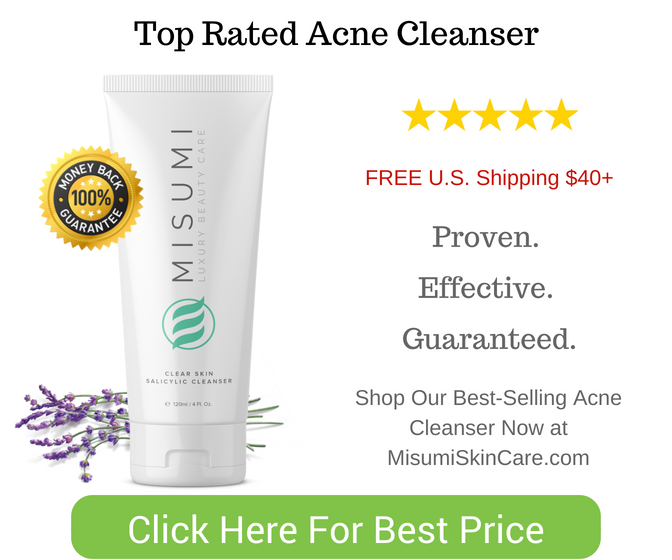Contents
In the United States, acne is the most common skin complaint, with as many as 50 million people being affected by it each year.
It’s a widespread problem and one that can leave you with both physical and psychological scars, including anxiety, depression, poor self-image, and permanent scars.
So how do you get rid of acne effectively, while preventing any acne scars from forming in the process?
Firstly, it’s important to understand acne, its causes, and all the different types of acne you can suffer from. Different aspects of our lives (including teenage hormones or pregnancy hormones) can have a huge effect on our skin, which is why treating acne doesn’t involve a one-size-fits-all approach.
Therefore, to help you get a head start in your treatment for acne, we’ve put together this comprehensive guide. This will help you identify the root cause of your acne before choosing the right treatment plan – with the help of your dermatologist or doctor, of course.
What Causes Acne
Your skin is covered in tiny holes (pores), which are also known as hair follicles, and when these become blocked, acne can rear its ugly head.
Near to the surface of your skin and within these tiny pores are sebaceous glands. These produce an oily substance (sebum), which helps prevent your skin from drying out and lubricates the hair.
When acne develops, too much sebum is produced by these glands. This excess oil starts to mix with dirt and dead skin cells, with this mixture forming a plug in your pore. When this plugged follicle is located toward the surface of your skin, it bulges outward, forming a whitehead. But when it opens up, the blocked pore can create a blackhead instead.
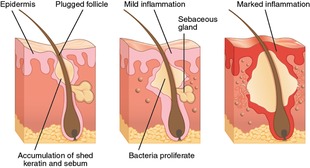
Sebaceous Glands and Acne Formation
Furthermore, when other forms of bacteria found on your skin (which are normally harmless), enter these blocked pores, they can infect and contaminate them, which is when cysts, nodules, pustules, or papules are caused.
Testosterone is a key culprit in teenage acne because during puberty the levels of this hormone within your body increase. This hormone plays an integral role in maintaining bone and muscle strength in girls and stimulating the development and growth of the testicles and penis in boys.
Because your sebaceous glands have a particular sensitivity to hormones, it’s believed that the higher testosterone levels cause the glands to start producing far more sebum than required.
Genetics can also influence whether or not you develop acne because acne has been found to run in families. Therefore, if your parents had acne at some point during their lives, your risk of developing acne will increase. For example, one study revealed that, if both parents had acne, a person is more likely to develop severe acne during their earlier years. It also uncovered that, if one or both parents had acne as an adult, this increases their child’s chances of having adult acne too.
Women account for 80% of adult acne cases. Many of these cases are put down to the radical changes in hormones that women experience at different stages in their lives. This includes having an acne flare up just before they start menstruating, having acne during pregnancy, or suffering from polycystic ovary syndrome.
Other triggers for breakouts include certain medications (e.g. lithium, steroid medications, and some antiepileptic drugs); certain cosmetic products; smoking; and regularly wearing items that apply pressure to the area affected by acne (e.g. backpacks or headbands).
Types of Acne
Now we’ve looked at the causes of acne, let’s take a look at the different types of acne to see which type you are suffering from. This will allow you to choose a successful treatment, particularly when you find out whether your acne falls into the noninflammatory or inflammatory category.
However, it’s worth noting that it is possible to have more than one type of acne at the same time.
Noninflammatory Acne
This type of acne includes whiteheads and blackheads and doesn’t tend to include any swelling. Due to the fact they aren’t inflamed or infected, a lot of blackheads and whiteheads can be treated with over-the-counter (OTC) treatments.
The most common type of noninflammatory acne treatment is salicylic acid. Even though this is marketed as being able to treat all types of acne, it is more effective in noninflammatory cases as it naturally removes dead skin cells and exfoliates your skin, removing the causes of your acne. Keep an eye out for moisturizers, toners, and cleansers that contain this ingredient.
As we’ve already seen, blackheads (also known as open comedones) are formed when your pores become blocked but the pore stays open. This forms the distinguished black color that characterizes a blackhead.
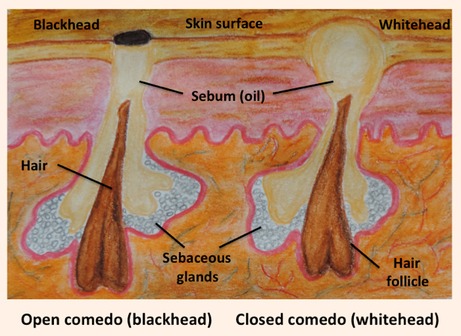
How Are Blackhead and Whiteheads Formed
On the other hand, whiteheads (also known as closed comedones) appear when the pore has closed up and the clogged material within it protrudes up from your skin, forming a telltale “zit.” These types of spots are often harder to treat because they’re closed, but salicylic acid can often come to the rescue, while topical retinoids are ideal for both types of comedones. If OTC retinoids don’t work, your dermatologist may be able to prescribe something stronger for you.
Inflammatory Acne
When your spots are swollen and red, these are known as inflammatory acne.
Even though dead skin cells and excess sebum are behind inflammatory acne, so too is bacteria, which is what leads to the inflammation and tenderness of these pimples. When bacteria enter your pores, it can cause an infection, which results in painful spots that can often be difficult to get rid of.
In these cases, the swelling, excess sebum, and bacteria can sometimes be reduced with benzoyl peroxide. You may also be prescribed a topical or oral antibiotic to use alongside benzoyl peroxide.
Papules form when your pores’ walls break down due to the severe inflammation that’s caused by the bacteria. This creates a spot that’s tender, hard, and usually pink in appearance.
Pustules are also created when your pores’ walls break down, but, unlike papules, these become filled with pus. Therefore, these spots push out from the skin and are usually redder than papules and have a white or yellow head.
Nodules are formed deeper beneath your skin and arise when your clogged pores are irritated even more, thus growing larger. As these are so deep within your skin, it’s difficult to treat them at home, which is why prescription medication is often needed to get rid of this type of acne. Isotretinoin is the most likely medication.
Cysts go even deeper into your skin than nodules and can develop when your pores are blocked by a mixture of dead skin cells, sebum, and bacteria. You’ll often find that these white or red bumps are painful, and this is due to cysts being the largest type of acne that form as the result of a severe infection. Acne scarring is also common when you suffer from cysts. In extreme cases, a cyst may need surgically removing, but the most common treatment is, again, isotretinoin.
How Severe Are These Types of Acne
The mildest forms of acne are whiteheads and blackheads, while moderate forms of acne include papules and pustules. In severe cases of acne, you’ll have developed cysts and nodules, and will need to seek the advice of your dermatologist or doctor to clear it up. Picking at any of these types of acne can cause scars, especially when squeezing the more severe cysts and nodules.
Teenage Acne
When you think of acne, you’ll often think of teenage acne because, during your teenage years, you’re more likely to develop acne than at any other time in your life. In fact, according to some statistics, 80% of teenagers will suffer from acne at some point.
It isn’t 100% clear why some people are more likely to suffer from acne than others, but an important factor in acne, particularly in teenage cases, is the hormone androgen. This is the male sex hormone but, in puberty, it’s found in both boys and girls. As these hormones make the sebaceous glands larger and produce more sebum, this plays a huge role in your development of acne as a teenager. Birth control pills or pregnancy can also lead to an increase in androgens.
Teenage Acne and How It Can Affect Your Self-Esteem
One of the biggest impacts of teenage acne can have on you is the effect it has on your self-esteem. Having numerous spots, especially if they form on your face, can make you feel incredibly self-conscious, and with some cosmetic products being a contributing factor to acne, you can soon find yourself in a vicious, never-ending cycle.
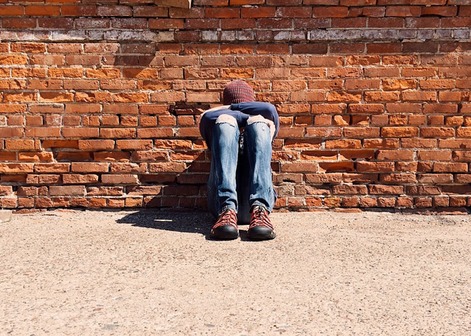
Acne and How It Affects Self-Esteem
The perception of acne doesn’t help, either. As one study in the U.K. found that acne sufferers often receive verbal abuse from friends, family, and strangers because of the skin condition they’ve developed. The British Skin Foundation’s survey demonstrated how just less than 60% of acne sufferers have been taunted because of their skin condition.
Worryingly, the survey also revealed how:
- 10% of people with acne have been unfairly dismissed from work because of it
- 20% felt their acne had caused their relationship to end
- 20% had attempted or thought about suicide because of acne
This demonstrates just how serious teenage acne is – and not just because of the physical effects it has. Mentally, acne can be very difficult to deal with, which is why it’s important to be educated on the topic, even if you’re one of the lucky ones who doesn’t suffer from spots. Understanding acne and its detrimental side effects will help acne suffers tackle the issue head on, while those surrounding them can provide the best possible support.
To see first-hand just how people with acne can be treated, check out this video by Em Ford. She exposes some of the comments she received when she posted pictures online of her face without makeup.
How to Get Rid of Teenage Acne
Thankfully, there are ways you can get rid of teenage acne. Alongside all of the treatments available for acne, there are a number of things teenagers can do to prevent acne from developing or getting worse.
Cleansing is a crucial part of any skincare regime, and is particularly important when you’ve got acne. Avoid any harsh cleansers and don’t scrub your face. Instead, use a gentle cleanser twice a day to remove excess dirt and oil. Even though it’s tempting to wash your face more frequently, especially if you’ve got oily skin, this will only worsen the problem. By drying your skin out through too much washing, you’ll encourage the production of sebum, thus worsening your acne.
When using products on your skin, be sure to check they’re noncomedogenic, as this means they won’t clog your pores. A lot of cleansers, moisturizers, and even makeup has been specially formulated to prevent clogged pores, so you shouldn’t have too much trouble finding a product that works for you.
Other things you can do include, refraining from squeezing or picking spots as this can add to the bacteria on your skin and cause scarring; avoiding cigarettes and alcohol as much as possible as these can be bad for your skin; watching what food you’re eating, including certain dairy products and high GI foods like bread and cakes; and using sunscreen regularly.
There are also some natural ways you can treat your teenage acne, which includes products such as tea tree oil, honey, apple cider vinegar, witch hazel, and chamomile tea.
Finally, make sure acne doesn’t define you as a person. Take all the necessary steps to improve your skin, speaking to a dermatologist if required, and keep doing everything you enjoy.
Body Acne
Did you know, over 50% of people who suffer from facial acne also have body acne? You just might not have realized because their body is covered up much more than their face.
The reason for this high level of body acne is because the skin on the chest and back contains far more acne bacteria and sebum than the rest of the body. It develops in a similar way to facial acne, but body acne can result in more severe lesions due to the thickness of the skin that’s found on the torso.
Anywhere on your body can be prone to acne except for the soles of your feet and palms of your hands. That’s because these are the only two areas that don’t contain sebaceous follicles, which is where acne develops.
The Causes of Body Acne
The cause of body acne, like other cases of acne, isn’t fully known, but it is clear that physical irritation can make it far worse. This is what’s deemed acne mechanica, which is caused by something rubbing against your skin and irritating it. Even though sweat on its own won’t cause acne, clothing that’s damp with sweat can aggravate your acne, especially if it’s tight or something is causing it to rub on your body.

Acne Mechanica
Furthermore, body breakouts are, according to Chinese medicine, linked to particular ailments, including allergies and digestive problems. The underlying source can be found by using body mapping – an ancient technique used by Chinese doctors.
How to Get Rid of Body Acne
There are a number of ways you can get rid of body acne, and a lot of this comes down to the steps you take to try and prevent it. For example, if you shower as soon as you’ve finished exercising, you’ll get rid of the excess oil, dirt, and sweat that’s built up. You should also wear loose clothes, avoid any items that can irritate or rub on your skin (e.g. backpacks), moisturize with noncomedogenic products every day, exfoliate on a weekly basis, change your sheets and towels regularly, and avoid using highly-fragranced detergents or fabric softeners.
Back acne (also known as bacne) can be eased by cleansing with a mild body wash that contains salicylic acid, while also gently exfoliating. Tougher more severe spots may also need a spot treatment that contains benzoyl peroxide.
Chest acne can become more prominent in warmer weather because of the higher levels of sweat you may be producing. And due to the skin on your chest being thinner than other areas of your body, it’s even more crucial you don’t squeeze or pick at spots that appear in this area. Equally, you might want to try a retinol-based product, as this can help unclog your pores – but don’t forget to apply more sunscreen if you do as it will make you more sensitive to the sun’s rays.
Neck acne can be treated in much the same way as back acne, using a body wash that contains benzoyl peroxide or salicylic acid. Your dermatologist may also be able to recommend a beautician who carries out specialist facials that target bacteria and penetrate deep into your skin.
Shoulder acne can be prevented by not wearing any straps over this area of your body. You might also find a concentrated spot treatment that contains benzoyl peroxide is effective in treating acne in this area. This is due to these spots often being smaller on your shoulders.
Butt acne is another common instance of body acne and can be worsened when you wear tight pants or underwear. Opt for loose-fitting clothes, use an antibacterial cleanser, and gently exfoliate this area to prevent butt acne from developing.
Finally, if your spots seem particularly painful or large, you should seek medical advice straight away. These could be folliculitis (where your hair follicles have become inflamed) or carbuncles (similar to cystic acne), and may require specialist treatment, such as a course of antibiotics.
Pregnancy Acne
During pregnancy, more than half of women will experience acne in some form or another. And you’re more likely to get acne when you’re pregnant if you’ve already got spots beforehand. However, in stark contrast, some women find their skin clears up during their pregnancy!
Nevertheless, when you have a breakout during your pregnancy, one of the biggest concerns you will have is how you can safely treat your acne without harming your unborn baby.
What Causes Pregnancy Acne?
Sometimes, acne can be a sign of pregnancy because you may experience a flare-up during your first trimester. As your hormone levels start to increase rapidly at this stage of your pregnancy, you may experience a breakout in the 4th or 5th week of your pregnancy, which might be the earliest sign of your pregnancy.
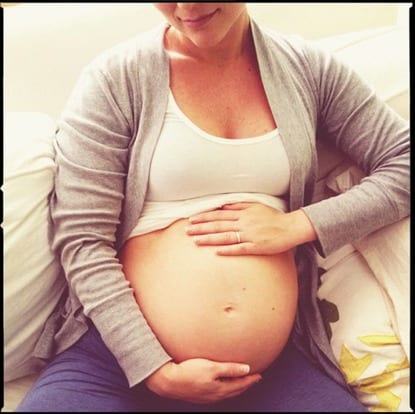
Pregnancy Acne and Its Causes
The hormones that fluctuate at this time are androgens, and as we’ve already seen, these boost your sebum production by making your sebaceous glands larger. With these larger pores comes the risk of bacterial infections and acne, which tend to occur on the face or body during pregnancy. In rare cases, cystic acne can be experienced by pregnant women, too.
What Treatments Aren’t Safe to Use When You’ve Got Pregnancy Acne
Getting acne when you’re pregnant is completely normal, and with it being largely down to your hormone levels, your skin should return to normal afterward. Therefore, if you can, try to avoid any medical treatments and select natural remedies instead.
Before you start any treatment for your acne when you’re pregnant, you should speak to your doctor to find out what will work for your skin without harming your baby.
Isotretinoin is used to treat severe acne but is not an available treatment when you’re pregnant. This is due to the serious birth defects it can cause. Furthermore, topical retinoids should also be avoided when you’re pregnant, because, even though only a small amount may be absorbed into your skin, this could still be enough to induce a higher risk of birth defects.
You should also avoid oral tetracyclines (e.g. doxycycline, minocycline, and tetracycline), as this can inhibit bone growth and may discolor your baby’s permanent teeth. Hormone therapy and salicylic acid aren’t recommended either.
What Treatments Are Safe to Use When You’ve Got Pregnancy Acne
Some experts will recommend certain topical prescription products, like erythromycin and azelaic acid, while over-the-counter treatments such as benzoyl peroxide or glycolic acid options may also be suitable. As only approximately 5% of these medications are absorbed into the body, they aren’t seen to pose a higher birth defect risk to your baby.
However, topical medications and pregnancy is still an under-researched topic, which is why you may want to approach these types of acne treatments with caution.
Finally, the usual commonsense approach can work wonders with your pregnancy acne. Cleansing regularly, avoiding irritants, watching what’s touching your skin, shampooing your hair regularly, keeping towels and sheets clean, avoiding picking or squeezing spots, using sunscreen, and avoiding oily makeup are all great everyday, natural steps you can take toward clearer skin.
It’s also worth noting that, any medication deemed harmful during your pregnancy, will still be harmful after the birth if you’re breastfeeding.
How to Prevent Acne
Once you’ve received your diagnosis and you’re taking the necessary medication to treat your acne, it’s also important that you make a few lifestyle changes to prevent your acne from reappearing.
Here’s how to prevent acne
Keep your face clean by washing it twice a day to get rid of excess oil, impurities, and dead skin cells. Don’t wash it more than this (unless you’ve been exercising) as this can dry your skin out. Always use a mild cleanser and tepid water, patting (not rubbing) your face dry after you’ve washed it. Be sure to put your towel in the laundry afterward too, as towels can harbor bacteria that’ll make your acne worse.
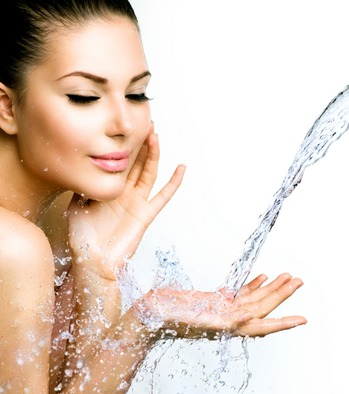
How to Prevent Acne with Regular Cleansing
Moisturize regularly to prevent your skin from drying out. Look for a noncomedogenic moisturizer so it won’t clog your pores.
Use over-the-counter treatments to assist with stubborn spots and nasty breakouts. Most of these will contain ingredients such as lactic acid, glycolic acid, salicylic acid, or benzoyl peroxide. This will help dry your skin out and prevent bacteria from breeding but may cause your skin to become dry and peel at first. So, always start with a small amount before upping the dosage and frequency as your skin adjusts to it.
Be careful how much makeup you use because this can contribute to your breakouts. Try to avoid wearing blush, powder, or foundation, but if you do wear it, always make sure you’ve washed it off before you go to bed. Try to find oil-free cosmetics and makeup that’s labeled as being noncomedogenic. Taking the time to read the ingredients before purchasing should help you find makeup that won’t contribute to your acne problem.
Avoid certain products for your hair, including gels, pomades, oils, and fragrances, as, if these manage to get onto your face, they may irritate your skin and block your pores. Try using a gentle shampoo/conditioner, instead, while also washing your hair frequently or tying it up so the oil from your hair doesn’t end up on your face.
Don’t put your hands on your face because this can add to the bacteria you’ve got on your skin. And keep your hands firmly away from those spots because picking or popping them can lead to acne scarring.
Stay away from the sun or wear sunscreen because too much ultraviolet light can increase the redness and inflammation of your skin, while also causing post-inflammatory hyperpigmentation. You should also be aware of certain medications that increase your skin’s sensitivity to the sun. Wear sunscreen (again, noncomedogenic) to protect your skin, regardless of whether you’ve got pimples or not.
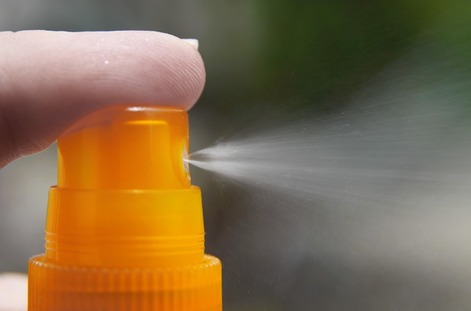
Image Title: How to Prevent Acne with Sunscreen
Enjoy the right diet for your skin by avoiding certain foods like dairy products and foods that have a lot of processed sugar in them. Opt for more fruit and veg, refrain from junk food and greasy food – but remember, eating one chocolate bar or enjoying a pizza every now again will not give you acne!
Try to exercise every day as this will give your entire body a boost, not just your skin. Just avoid touching your face after using exercise equipment (and don’t hang your towel on it either) as this can transfer bacteria to your skin. Always shower afterward to get rid of sweat.
Chill out as much as you can because studies have shown that stress can add to the severity of your acne. Find out what’s making you stressed and resolve it.
How to Get Rid of Forehead Acne
When it comes to places acne likes to show itself, your forehead is one of the most popular places. And there are a number of reasons as to why this is a prime location for acne breakouts.
What Causes Forehead Acne
Like all types of acne, forehead acne is caused when your skin’s pores become blocked by the buildup of dirt, dead skin cells, and sebum. And a number of things can add to the oily texture of your skin, including puberty (foreheads are the most common area for your first breakout as a teenager), the hair products and makeup you use, how much sun exposure you have, and the clothing you wear on your head.
In most cases, forehead acne will be worsened by what’s touching this area of your face, which is why it’s important to remain vigilant when you suffer from breakouts here. Avoid using any products that may clog up your skin’s pores, while making sure your skin isn’t aggravated by the sun’s rays.
You should also refrain from wearing any caps for extended periods, making sure these are washed after every use to get rid of any bacteria or dirt. You can also prevent further breakouts by washing your pillowcases frequently (as much as twice a week). This will prevent any of the bacteria and oils that are being transferred from your mouth and hair onto your pillowcase from being transferred back onto your face.
How to Get Rid of Forehead Acne Naturally
As well as monitoring what you’re putting near your face, there are some natural remedies you can try to get rid of forehead acne:
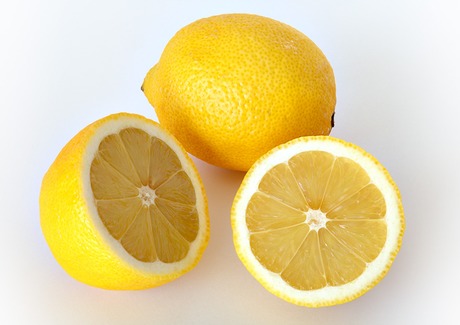
Treating Acne with Natural Remedies
Lemon is great for getting rid of bacteria and you can use it by squeezing some fresh lemon juice onto the affected area for five minutes. You might also want to add some honey to the lemon juice as this has great anti-inflammatory properties.
Tea tree oil straight from the bottle (two to three drops) can help target your forehead acne due to its antibacterial qualities.
Melon helps cool down your skin, and because it’s so mild, you can even leave this treatment on your forehead throughout the night. This will increase how soft your skin feels while also reducing your acne.
Black pepper has been a favored treatment for acne for many years, and all you need to do to use it is grind it down. Make sure the solution’s dry and keep it away from your eyes.
Other natural remedies include aloe vera, green tea extract, zinc, and azelaic-acid. And exfoliation is another great technique as it helps to remove the buildup of dead skin cells that may clog your pores.
Antibiotics for Acne
In many cases, doctors will prescribe antibiotics for acne when the case is likely to leave scars or is deemed “severe.” Antibiotics help kill the acne-causing bacteria, reducing your pimples and thus your risk of acne scars.
There are two types of antibiotics you can be prescribed – topical (where you put them directly on your skin) or oral (taken in tablet form through the mouth). Topical ones kill the bacteria found on your skin, while oral ones kill the bacteria found within your skin’s pores. The latter work best when you start on a high dose which is slowly reduced as your acne starts to improve.
Topical Antibiotics for Acne
If you’ve got mild acne, topical antibiotics may be all you need. The most common types are erythromycin or clindamycin, and these may also be combined with another treatment, e.g. a topical retinoid.
In-gel or cream form, topical antibiotics tend to be prescribed on a six-eight-week course. But after this time the treatment is often stopped due to the risk that the bacteria will become resistant to this treatment. If it does, this could encourage additional infections and may make your acne worse.
Common side effects of topical antibiotics include peeling of the skin, burning or red skin, and minor irritation. You should also discuss these options with your doctor before taking them if you are trying for a baby or you’re already pregnant.
Antibiotic Tablets for Acne
People who are more likely to suffer from acne scars or who have severe acne may be prescribed oral antibiotics. Common types include erythromycin or tetracyclines (such as Doxycycline – e.g. Monodox or Vibramycin, or Minocycline – Minocin). The latter is often the most favored treatment, but breastfeeding or pregnant women are usually prescribed the former as it’s safer to use.
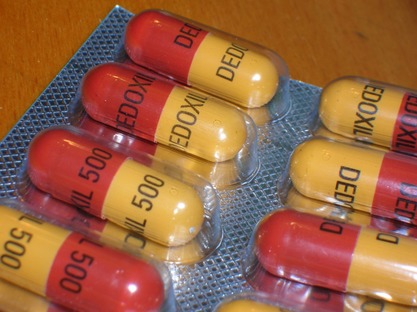
Antibiotics for Acne
Typically, it can take around six weeks before you notice the benefits of these antibiotics, and how you react to the treatment will depend on how long the course runs for. Oral antibiotics are often taken from four to six months. During this time tetracyclines will make your skin more sensitive to the sun. They also decrease the effectiveness of the contraceptive pill in the first few weeks, so you will need to use an alternative type of contraception initially.
You may also be prescribed benzoyl peroxide to put on your skin while taking antibiotics – this helps reduce the risk of you developing antibiotic resistance.
Vitamins for Acne
If you’re keen to combat your acne but you want to try and keep things as natural as possible, there are some vitamins for acne that can help.
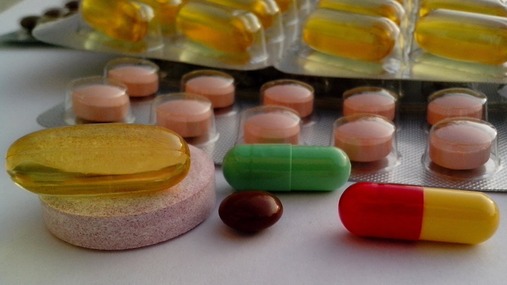
Vitamins for Acne
Vitamin A
Even though vitamin A can help remedy acne, it’s important you’re using it in the right way. According to studies conducted by the University of Michigan, oral supplements don’t work like topical applications. And they even suggest you don’t use supplements because they can harm your body when taken in high doses, especially when you’re pregnant.
This is due to the vitamin being fat-soluble, so it can build up in your body, and when the international units reach 10,000 or more, they can be toxic, particularly during pregnancy. That’s why you should always consult your doctor before you start taking any supplements when you’re pregnant.
However, when used as a topical medication, your acne can be improved by vitamin A. A lot of topical medications have altered the vitamin chemical so it’s a retinoid that can be placed straight onto your skin. This retinoid can help your skin regenerate and heal quickly. However, retinoids cannot be taken by pregnant women and they can increase your skin’s sensitivity to UV rays.
Zinc
As another mineral that can be used in the battle against acne, you can take zinc as a topical treatment or oral supplement.
Recent studies have revealed how zinc can decrease the skin’s production of oil, while also protecting it against inflammation and bacterial infection. And you only need small amounts to make a difference, with the recommended daily allowance for adults being 8-11 mg (according to the Institute of Medicine).
Another study also found that zinc contained within topical lotions can help treat acne, with the skin being significantly cleared after using a lotion that contained 1.2% zinc acetate and 4% of erythromycin twice.
Truths and Myths About Vitamins and Acne
Vitamin E is another type of vitamin that’s often hailed as a remedy for acne, however, this hasn’t been researched as efficiently as zinc or vitamin A. Nevertheless, research has found zinc and vitamin E and A deficiencies in acne sufferers. That’s why, as an acne sufferer, it’s probably worth upping your vitamin E uptake to the recommended daily amount of 15 mg.
Other studies have demonstrated how tea tree oil is another great natural treatment for acne. For example, one study looked at the effects of tea tree oil on 30 people over a period of 45 days, placing a further 30 people in a placebo group. Far greater improvements were seen in the group using the gel that contained tea tree oil. This makes this natural treatment a great alternative to benzoyl peroxide. Boasting similar properties (e.g. decreasing oil production and clearing out bacteria), both treatments are available as OTC treatments but tea tree oil appears to have fewer side effects.
Acne Clinic
Based in San Leandro, California, Face Reality Acne Clinic has been providing cutting-edge acne treatments for over 10 years, having first opened in 2005.
The clinic was founded by Laura Cooksey, who, during her 30s, also suffered from acne before being inspired by an esthetician who created a tailored plan for her. They focused on Laura’s risk factor, what had/hadn’t worked in the past, her diet, and skin type. This lead to Laura becoming a fully-fledged esthetician in 1990, with her devoting her time to studying acne when she opened her clinic.
Why is Treatment Different at the Acne Clinic
To make sure everything is fully tailored to each individual patient’s needs, the clinic only uses their own Face Reality products during the treatment program. And with such a huge array of products available, they can provide personalized plans that combat every factor of a person’s skin.
As each breakout is unique to the acne sufferer, it’s important that real diagnostics are used, so a personalized care program can be put in place – and that’s exactly what the clinic does. Contributing factors to acne can include oil production, genetics, hygiene, skin cell reproduction, pore size, hormones, diet, stress, and skin sensitivities – to name a few. After analyzing a person’s face, the Acne Clinic will take each of these factors into account before putting together a plan.
However, the treatment process doesn’t just stop there, as the clinic will then monitor each patient closely so they know what’s working and what needs changing to increase the program’s effectiveness.
What Treatments Are Available at the Acne Clinic
Even though there are some one-time evaluations and treatments available at Face Reality, the main objective is to provide acne treatment twice a month over a long period of time. This is because of their unwavering belief in this program – hence why your first consultation is done for free.
The long-term treatment features a number of things including a skin analysis, recommendations for treatments and products, an analysis of lifestyle factors that could be contributing toward the acne, an information pack, and a customized system to clear the acne. These bi-monthly visits include hydration or exfoliation of the skin, extraction of existing problems, and killing off any bacteria that causes the acne.
Other services include acne rosacea treatment, body acne treatment, an a la carte exfoliation treatment, and acne scarring (discoloration scars only – not pitted ones).
How to Get Rid of Acne Scabs
As an acne sufferer, you’ll be all too aware of how unsightly and embarrassing acne can be. And when acne scabs form, it can be incredibly tempting to start picking at them to try and speed up the healing process. However, this only worsens the problem and can lead to permanent scars forming in their place.
To see why in more detail, take a look at this video from Business Insider Science.
Now you know why picking your scabs isn’t the answer, here’s how to get rid of acne scabs quickly – but without causing any damage to your body’s natural healing process:
Keep washing the acne-prone area twice a day using a specialist cleanser. And always make sure you’re using a gentle, clean cloth to treat the area. Rinse off the cleanser with warm water before patting it dry with a clean towel. Always use clean cloths and towels to prevent bacteria from spreading.
Avoid picking, scratching, or touching the scabs as this can delay the healing process and spread bacteria. If you do find that the area’s getting itchy, though, try patting it gently with a clean towel to ease this sensation.
Use a topical acne cream as recommended by your doctor or dermatologist (often twice a day) after you’ve cleansed your face. This can speed up the healing process, keeping the area dry so the scab falls off quickly. Make sure you’ve got clean hands before applying the ointment.
Apply a warm compress that you’ve dampened with hot water to your scabs for around 10 minutes, twice a day. Hold it gently against the affected area so the moisture can soften the scab and hopefully loosen it so it falls off easily. This compress also helps draw blood to the area, speeding up the healing process.
Put a topical antibiotic cream on your scabs twice a day (around 30 minutes after you’ve applied the initial acne cream). This helps heal your existing acne scabs while also preventing any new breakouts from occurring. The cream also helps soften the scabs so they fall off, too.
Try natural remedies where possible including tea tree oil, organic honey, aloe vera, and petroleum jelly. Tea tree oil boasts antiseptic properties, honey is a natural antibiotic and antiseptic, aloe vera helps soothe the skin, and petroleum jelly helps to moisten the area and protect it from bacteria. Using one or several of these natural remedies can help you target your acne scabs quickly and efficiently, without the need for prescription medication.
Finally, make sure you’re not getting too stressed because, as we’ve already seen, acne can be aggravated by stress, and studies also suggest that it may reduce the effectiveness of your body’s healing processes.
How To Get Rid of Acne – A Conclusion
As you can see, there is a whole host of different types of acne along with a number of different ways of treating these. You may choose to try natural treatments at first, but, in more severe cases, you may need to seek the advice of your doctor or dermatologist.
However, throughout the entire process of getting rid of acne, it’s important to remember that you’re not alone. The majority of us will suffer from acne at some point in our lives, and by arming yourself with plenty of handy tips and tricks on how to get rid of acne, you can beat the breakouts – for good!

